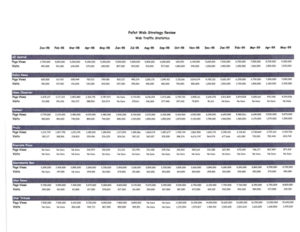[This post was written with the help of AI (ChatGPT) under the direction of Howard Finberg, using original materials from the 1993 SND workshop.]
In October 1993, Howard Finberg, then a senior executive at Phoenix Newspapers, presented a bold and forward-thinking call to action at the Society for News Design (SND) workshop in Dallas. His message? Technology alone doesn’t transform journalism—leadership does.
In a trio of materials—his presentation slides, a one-page manifesto, and an adapted quiz on “techno-types”—Finberg introduced the concept of techno-evangelism. This philosophy positioned newsroom managers not just as adopters of tools, but as cultural guides capable of leading staff through the disruptions of digital transformation.
“Technology is not hardware or even software,” Finberg emphasized. “It’s about workflow—how people work, how information moves, and how decisions are made.”
A Culture Shift, Not Just a Technical One
Finberg’s insights in these documents reflect a growing realization in the early 1990s that digital change was not just about adding computers—it required restructuring editorial thinking and habits. Drawing a distinction between evolutionary changes like hot type to cold type and revolutionary changes like digital publishing, Finberg argued that this moment required newsroom leaders to step into the unknown.
“Techno-evangelism means finding a leader who will take risks, become a teacher, shoulder responsibilities, and be willing to go wandering in the ‘desert.’”
That metaphor—a lonely figure advocating change in a skeptical environment—was not accidental. Many newsroom leaders at the time were still uneasy with even basic digital tools. To address this, Finberg included a humorous quiz that helped participants identify if they were Techno-Phobes, Techno-Boomers, or Techno-Wizards. His approach was thoughtful but practical, focused not on hype, but on education and empathy.
Connections to Other Work
This presentation links conceptually with Finberg’s earlier and later work:
- Pagination: Human Factors in Newsroom Design
- The New Newsroom
- Named to New Job: Senior Editor/Information Technology
Across these efforts, a consistent message emerges: people, not platforms, determine whether technology succeeds or fails in journalism.
AI Conclusion 2025
As we revisit this pivotal moment through the lens of the Digital Futurist archive, it’s clear that Finberg’s guidance still resonates in today’s AI-infused media world. The same challenges he identified—skepticism, organizational inertia, and the need for cultural leadership—are present again as AI tools enter the newsroom. Institutions like The Associated Press have emphasized editorial oversight and human accountability when deploying AI, echoing Finberg’s focus on workflow and responsibility. The New York Times and other major media organizations have released AI principles that stress the central role of editorial judgment. Meanwhile, journalism philanthropy groups such as the Craig Newmark Foundation have emphasized training, transparency, and newsroom culture as essential to successfully integrating new technologies. Finberg’s vision—of leaders willing to explore, teach, and humanize technological change—continues to offer a roadmap that is as relevant today as it was in 1993.
